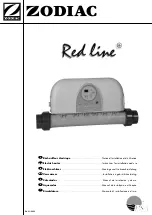
Product Features
QUBEVSM-V01-R0 Installation and Operation Manual
Intelligent Electric Vehicle Chargepoints
February 2023
Page
4
of
42
Product Features
x
Universal charging socket or Type 2 tethered
lead
x
Power rating – Up to 7.4kW or 22kW models
x
Adjustable power rating – 10A, 13A, 16A &
32A
x
Free QUBEV Smart Wi-Fi app
x
Scheduled / off-peak charging
x
Solar compatible*
x
PEN fault and residual current protection (AC
30mA Type A, DC 6mA)
x
Dynamic load balancing (CT clamp(s) &
cable(s) included)
x
OCPP 1.6 compliant
x
Built-in LED charging status indicator
x
UK Smart Charge Point Regulations
Compliant including tamper security
x
Wi-Fi / Ethernet connectivity
x
IP54 & IK08 rated
x
Corrosion & fire resistant
x
CE and UKCA certified
x
Easy to install and maintain
x
Wall or post mounting options
x
3 Year warranty
*App dependent features:
NOTE:
When detailing Load Balancing, this manual assumes the installation of a single
chargepoint. Whilst multiple chargepoints can be connected in a similar way, installers may
wish to consider connecting/monitoring using a third-party, compliant energy management
solution.
If connecting/monitoring via third-party equipment, make sure you are fully aware of the
manufacturer’s instructions so that the device/system can be installed correctly and in
conjunction with the chargepoint installation.
About Load Balancing
This chargepoint has a
Load Balancing
capability which is designed to prevent overloads of the
property’s power supply when a vehicle is being charged.
Once correctly installed and configured, the system will monitor the power being drawn by the
charging process and will compare this to the permissible maximum for the property as a whole
(which is set as part of the configuration). With this information, the power made available for
charging can be dynamically adjusted to reduce the load before the property’s maximum load is
exceeded.
NOTES:
x
Load balancing ONLY controls power made available to the VEHICLE. It does not control
power to other equipment and it is still possible for that equipment to overload the
property’s power supply.
x
Depending on the manufacturer, electric vehicles need a minimum of around 6 Amps to
charge. If the available power is below this level, the vehicle may stop the charge session.
x
The lower the power available for charging, the more slowly the vehicle will be charged.
About Demand Side Response
Demand Side Response (DSR) is where the chargepoint and the electricity provider are in
communication with each other. The electricity provider will control the chargepoint remotely via






































